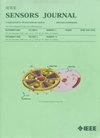Spatiotemporal Calibration for Autonomous Driving Multicamera Perception
IF 4.3
2区 综合性期刊
Q1 ENGINEERING, ELECTRICAL & ELECTRONIC
引用次数: 0
Abstract
Autonomous driving (AD) perception technology integrates images from variously positioned cameras to comprehend the surrounding environment. To accurately perceive these surroundings, it is essential to know both the precise pose of each camera and their exact alignment. Traditional online calibration methods are inadequate for AD perception because they either overlook the alignment between cameras with different fields of view (FoVs) or only consider alignment among cameras with the same FoV. This article introduces a spatiotemporal calibration method that analyzes both spatial and temporal information of cameras to estimate the poses of all cameras and their interrelationships without any restrictions on the camera mounting poses and FoVs. Temporal and spatial data are used separately to estimate camera poses, and the outcomes are merged to determine the optimized camera positions for seamless multicamera fusion (MCF). To assess the effectiveness of our proposed method, we compared it with an existing method using a specialized calibration facility and found that our results closely match those of the facility. Moreover, real-world driving tests show that our method surpasses existing methods that rely on a specialized calibration facility.求助全文
约1分钟内获得全文
求助全文
来源期刊

IEEE Sensors Journal
工程技术-工程:电子与电气
CiteScore
7.70
自引率
14.00%
发文量
2058
审稿时长
5.2 months
期刊介绍:
The fields of interest of the IEEE Sensors Journal are the theory, design , fabrication, manufacturing and applications of devices for sensing and transducing physical, chemical and biological phenomena, with emphasis on the electronics and physics aspect of sensors and integrated sensors-actuators. IEEE Sensors Journal deals with the following:
-Sensor Phenomenology, Modelling, and Evaluation
-Sensor Materials, Processing, and Fabrication
-Chemical and Gas Sensors
-Microfluidics and Biosensors
-Optical Sensors
-Physical Sensors: Temperature, Mechanical, Magnetic, and others
-Acoustic and Ultrasonic Sensors
-Sensor Packaging
-Sensor Networks
-Sensor Applications
-Sensor Systems: Signals, Processing, and Interfaces
-Actuators and Sensor Power Systems
-Sensor Signal Processing for high precision and stability (amplification, filtering, linearization, modulation/demodulation) and under harsh conditions (EMC, radiation, humidity, temperature); energy consumption/harvesting
-Sensor Data Processing (soft computing with sensor data, e.g., pattern recognition, machine learning, evolutionary computation; sensor data fusion, processing of wave e.g., electromagnetic and acoustic; and non-wave, e.g., chemical, gravity, particle, thermal, radiative and non-radiative sensor data, detection, estimation and classification based on sensor data)
-Sensors in Industrial Practice
 求助内容:
求助内容: 应助结果提醒方式:
应助结果提醒方式:


